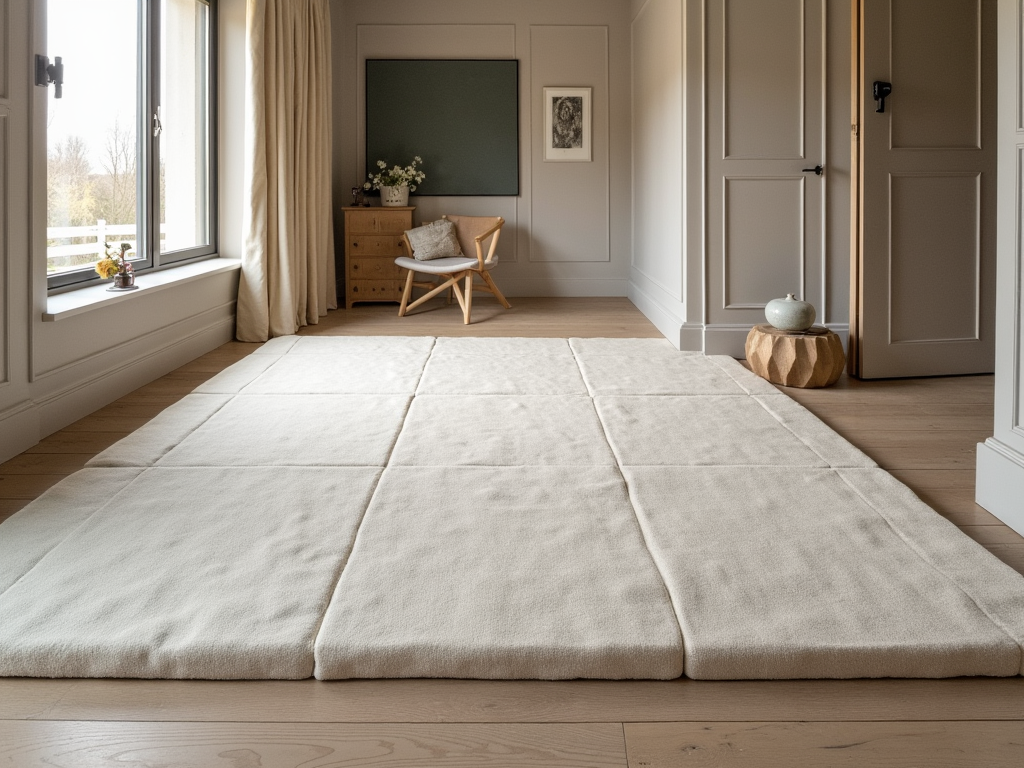Category Overview
Introduction
Underlayment is more than just a base layer in your home; it plays a crucial role in enhancing comfort, utility, and durability across various spaces. Whether you’re walking through your living room or relaxing in your bedroom, the right underlayment can absorb sound, provide cushion underfoot, and even help extend the life of your flooring. By creating a serene environment, underlayment promotes relaxation and elevates your everyday experience.
Functionality
The primary functions of underlayment include sound insulation, moisture protection, and added cushioning. Typically installed beneath flooring materials like laminate or hardwood, it enhances comfort while reducing noise—a significant benefit in shared living spaces or bustling homes. Depending on the type of room—be it a cozy living area for family gatherings or a quiet bedroom retreat—the choice of underlayment adjusts to meet specific needs. For instance, you might opt for thicker underlayments in high-traffic areas to absorb impact and reduce wear.
Design & Style
Underlayment comes in various styles and materials designed to suit different flooring types and decor aesthetics. Common materials include foam, cork, and rubber with features varying from water resistance to thermal insulation. You’ll find options that align with styles ranging from mid-century modern to rustic farmhouse vibes. Personalizing underlayment allows it to fit seamlessly with your home’s theme; whether you choose eco-friendly cork for a sustainable look or sleek foam for minimalist designs, there’s an option that complements your vision.
Practical Considerations
When selecting the right underlayment for your home, consider factors such as room size and how much foot traffic the area sees. Durability is key too—if you have pets or children, a heavy-duty material will serve you better than lightweight options. Pay attention to moisture ratings if you're laying flooring in areas like basements or kitchens where spills may occur frequently. Avoid common pitfalls such as overlooking noise reduction capabilities or selecting inappropriate thickness for specific floor types—these choices can impact both functionality and comfort.
Comparison and Alternatives
There are several materials available for underlayment—each with its own pros and cons. For example, foam tends to be budget-friendly but may lack moisture protection compared to cork. Rubber offers exceptional durability which is ideal for gyms but might not suit traditional home aesthetics as well as wood-based options do. When making decisions based on style preference or room size, consider how each material aligns with both practical use (like sound absorption) and visual appeal (as seen in design trends).
Trends and Popular Items
Currently trending within the realm of underlayment is eco-friendly cork that not only insulates but also adds an organic texture appealing to many homeowners aimed at sustainable living. Additionally, people are gravitating towards multi-layered foam options that promise greater comfort without sacrificing durability—a game changer for today’s diverse lifestyles. By understanding these aspects of underlayment—from functionality to style—you can make informed choices that enhance both comfort and aesthetic appeal throughout your home!


